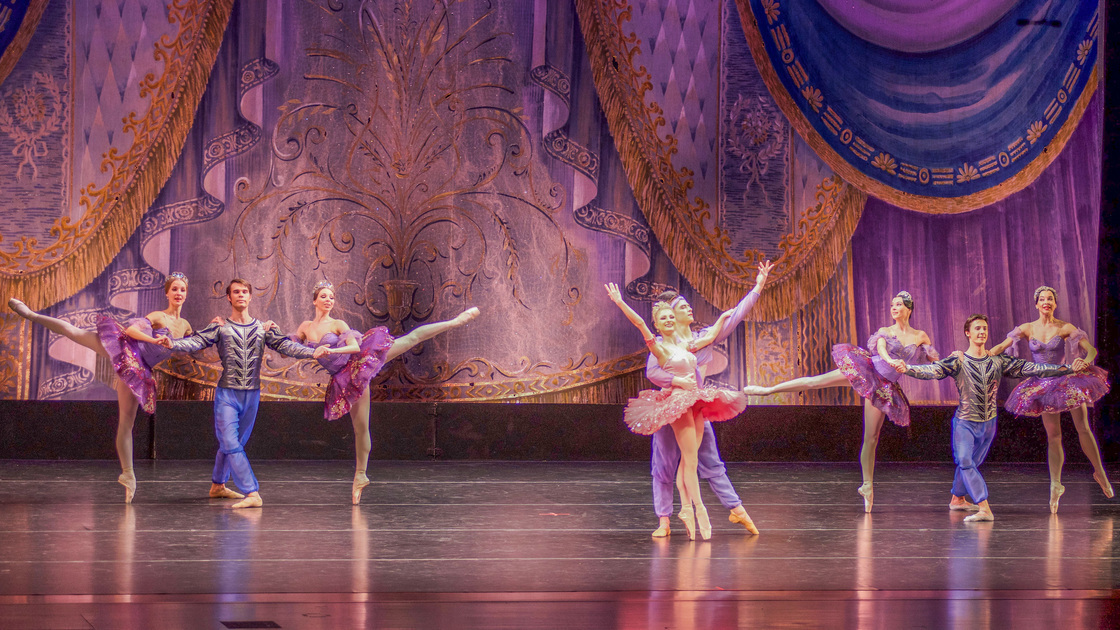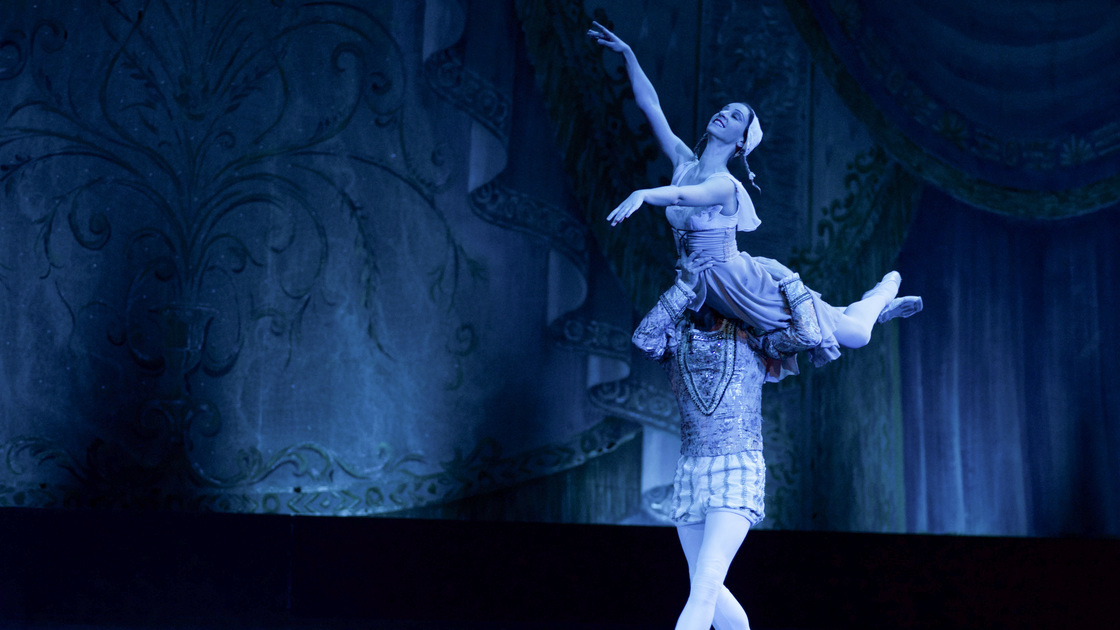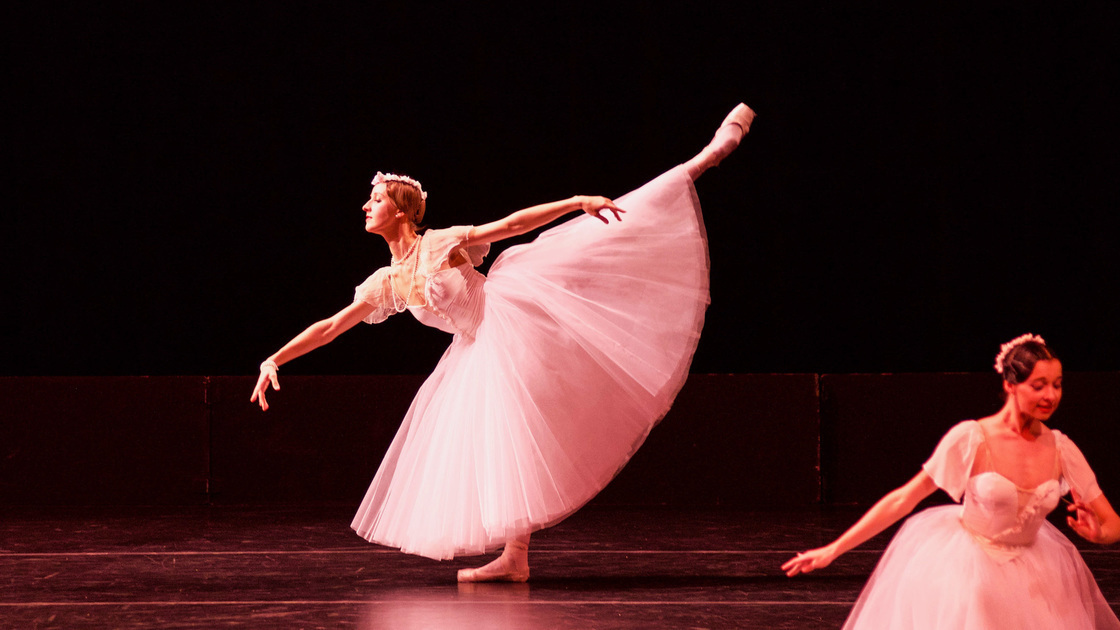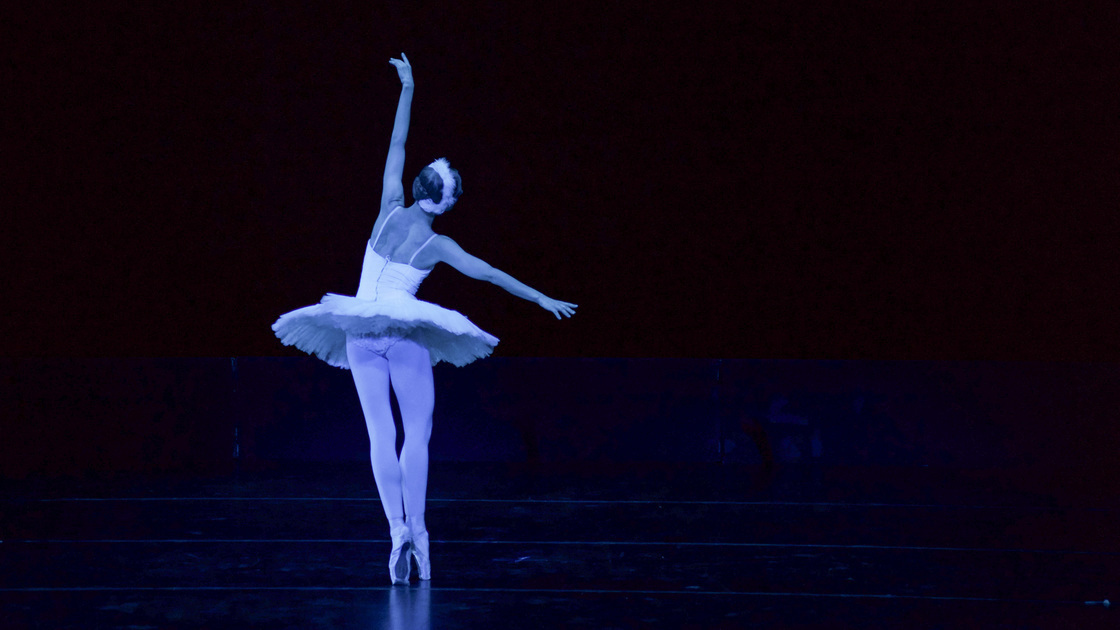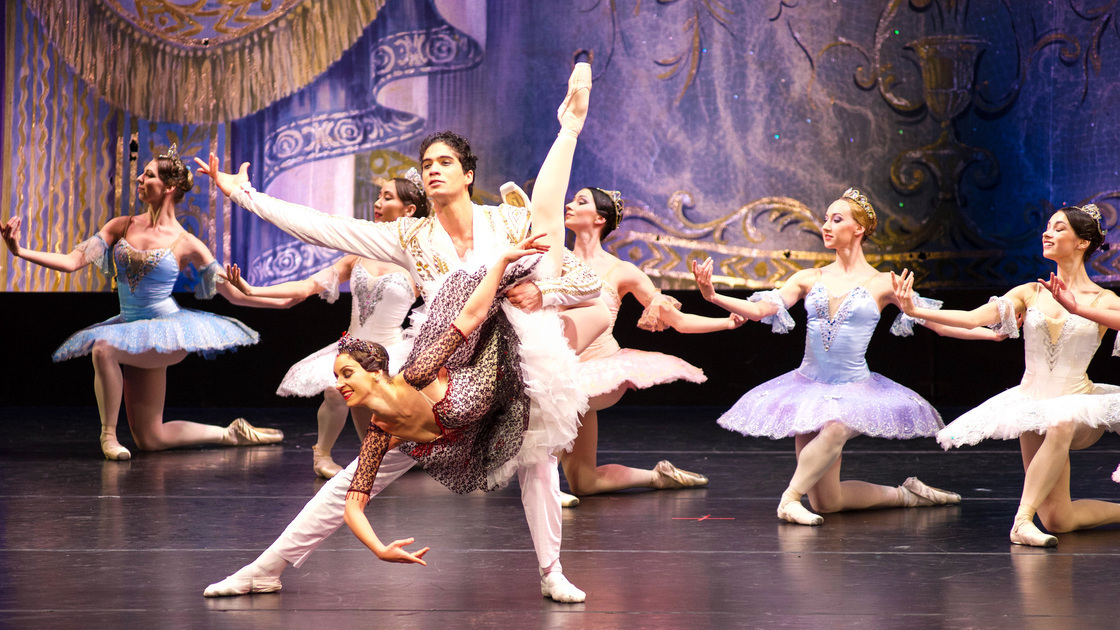EDMOND—The Moscow Festival Ballet returned to the Armstrong Auditorium stage, presenting two consecutive performances on January 29 and 30. Each performance was attended by approximately 530 patrons.
The first night of the performances presented a program showcasing dances from several ballets, including “The Rose Adagio,” from Sleeping Beauty, and the “Grand Pas de Deux,” from the first act of La Bayadere, as well as stand-alone pieces such as “Pas de Quatre” and “The Dying Swan.”
Of the varied repertoire, several concertgoers and staff mentioned “The Dying Swan” was their favorite of the evening. Soloist Galina Romanova entered the stage with her back to the audience as the sounds of a cello drifted through the hall. Her fluid arm motions gave the illusion of a bird’s wings, and her quick, tiny steps taken en pointe gave the illusion of the swan gliding across the water. The choreography, largely unchanged from its original 1905 form when created for famed Russian ballerina Anna Pavlova, is challenging but is designed less to showcase intense precision and more to flow the dance together with the music.
The second night showcased a condensed version of Romeo and Juliet in the first act, and selections from Swan Lake and Sleeping Beauty in the second act.
Romeo was portrayed by principle dancer Dmitrii Sitkevich. Sitkevich excelled in beats and high jumps, creating an energy on the stage that was well received by the audience. Juliet was portrayed by principal dancer Hanna Zimovchenko, who demonstrated skill in balance with a smile that welcomed the audience into the story.
One of the most well-known dances in Romeo and Juliet is the sword fight. Swords clash together on stage as the Montagues and the Capulets crash together in a feud. The fighting men use their opponent’s momentum to leap around each other, hitting their swords together as they fly through the air.
In the final performance, Dmitrii Sitkevich and principal dancer Alexandra Krukova portrayed the characters of Aurora and the prince from Sleeping Beauty. Together, the dancers showed a level of trust and skill that comes from dancing together for years. Sitkevich and Krukova displayed this in the aided turn, in which Sitkevich stood behind his partner, providing support for her as she turned several quick rotations in front of him, using his hands to keep her upright throughout the movement. In this move, it is not uncommon to hear faint rustling sounds of the woman’s costume in her partner’s hands, but Sitkevich and Krukova’s movements were silent.
Concert manager Ryan Malone said, “I always love when the ballet comes and seeing that level of artistry. This year with the variety of the greatest hits in ballet, I thought that was such a winner because it puts the focus on the art form and the dancing rather than the plot of a story.”
The Moscow Festival Ballet was founded in 1989 by Sergei Radchenko, who was a principal dancer for the Bolshoi Ballet. According to its website, the small company works together with the Russian National Ballet Theater “to reach audiences in smaller places, not just large cities. We wish to give people the opportunity to experience classical Russian ballet.”
This was the fourth time the Moscow Festival Ballet has visited the auditorium. In 2012, 2014, and 2016 they performed Sleeping Beauty and Don Quixote. The Russian National Ballet Theater performed at Armstrong in 2015 and 2017.
On February 20, Dublin Irish Dance will perform on the Armstrong Auditorium stage along with an eight-member Irish band and a vocalist.
